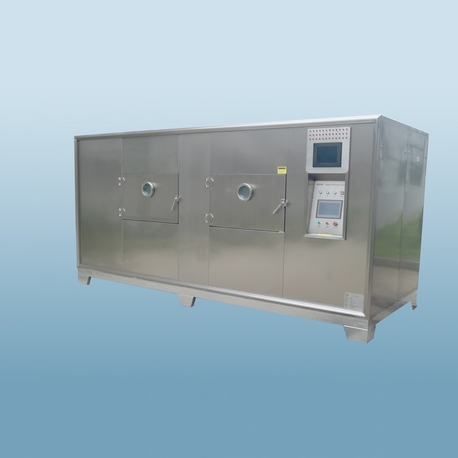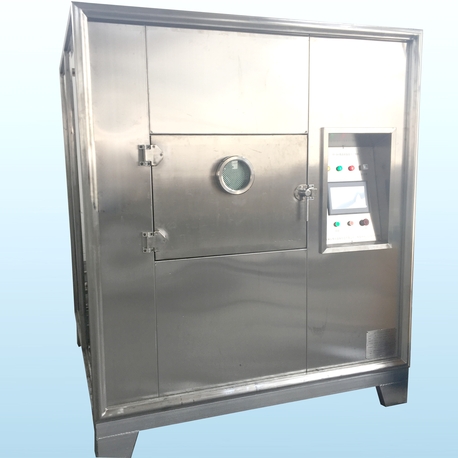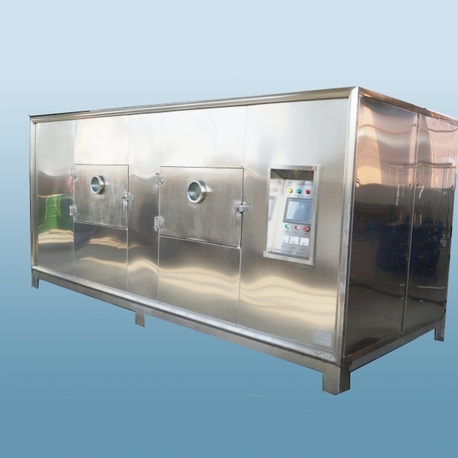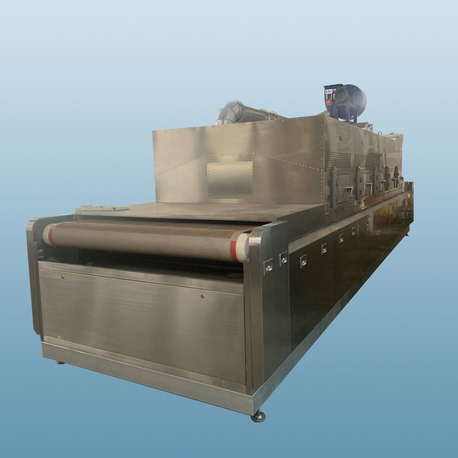If you've ever enjoyed a crunchy apple chip, added dried onions to a soup mix, or used powdered cheese in a ready meal, you've experienced the end product of a critical piece of industrial machinery: the industrial food dehydrator. Far removed from the countertop dehydrators found in home kitchens, these commercial-scale systems are the workhorses of the food industry, enabling the preservation, value-addition, and global distribution of a vast array of food products. For processors, choosing the right industrial food dehydrator is a strategic decision that directly impacts product quality, shelf life, and operational efficiency. This article delves into how these machines function, their diverse applications, and what to consider when integrating one into your production line, with a look at how manufacturers like Nasan are addressing industry challenges.
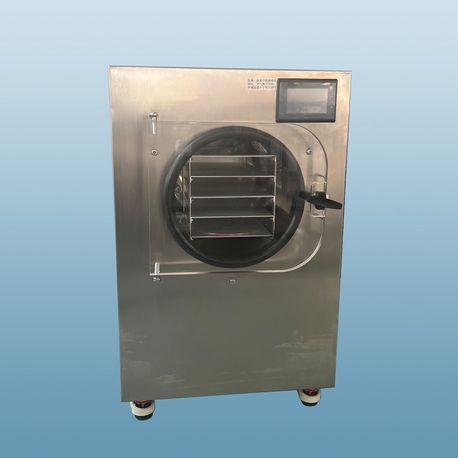
More Than Just Drying: The Core Function of an Industrial Food Dehydrator
At its heart, an industrial food dehydrator is designed to remove water from food in a controlled and efficient manner. Water is the primary culprit behind food spoilage, as it supports the growth of microorganisms like bacteria, yeast, and mold. By drastically reducing the water activity (aw) level, a commercial food drying machine halts this decay, significantly extending the product's shelf life without the need for refrigeration.
However, modern industrial dehydration goes beyond simple preservation. The process must also:
Retain Nutritional Value: Properly controlled dehydration minimizes the degradation of heat-sensitive vitamins and nutrients.
Preserve Color and Shape: Advanced airflow and temperature control prevent undesirable browning (enzymatic and non-enzymatic) and excessive shrinkage or cracking.
Concentrate Flavor: Removing water intensifies the natural flavors of the food, which is a desirable trait in many products like dried fruits and powdered ingredients.
Where Are Industrial Food Dehydrators Used? A Sector-by-Sector Look
The application of industrial food dehydration technology is remarkably broad, touching nearly every segment of the food and beverage industry.
Fruit and Vegetable Processing: This is one of the largest applications. Slices, dices, and purees of fruits like mangoes, bananas, and berries, and vegetables like onions, carrots, and tomatoes are dehydrated for use in cereals, snacks, soups, and ingredient blends.
Meat and Seafood Industry: The production of jerky, dried meat snacks, and pet treats relies heavily on specialized industrial food dehydrators that can handle high-protein materials safely, often incorporating cooking and pasteurization steps.
Dairy and Alternative Proteins: Creating milk powders, whey protein concentrates, and powdered cheese is a classic function of large-scale spray dryers, a specific type of industrial dehydrator. This is also expanding into plant-based milk powders.
Herbs, Spices, and Ingredients: As covered in our previous articles, preserving delicate aromatics requires gentle drying, a capability of modern food drying equipment.
Instant Product Manufacturing: For instant noodles, soups, and meals, dehydration (often through air drying or freeze-drying) is what makes the product reconstitute quickly with hot water.
Inside the Process: The Operational Workflow of a Commercial Dehydrator
While specific steps vary by machine type and product, a general workflow for an industrial food dehydrator follows these stages:
Preparation and Loading: Raw food is washed, sorted, and pre-treated. This may involve peeling, coring, slicing (to a uniform thickness for even drying), and blanching (to inactivate enzymes that cause spoilage and color loss). The prepared food is then evenly spread onto trays, conveyor belts, or fed into a feeding system.
System Parameter Configuration: The operator or automated system sets the critical parameters. Temperature, humidity, and airflow are precisely calibrated for the specific product. For instance, herbs are dried at low temperatures (30-40°C), while some vegetables can withstand higher temperatures (55-70°C).
The Active Drying Phase: The industrial food dehydrator closes, and the cycle begins. Heated, low-humidity air is circulated throughout the product. The air absorbs moisture from the food and is then vented or passed through a dehumidifier. In systems like tunnel dryers, the product moves through different zones with progressively lower humidity.
Cooling and Unloading: Once the target moisture content is achieved (often monitored by in-line sensors), the product is cooled to ambient temperature to prevent condensation during packaging. It is then automatically or manually unloaded for the next steps, such as packaging or size reduction.
Navigating the Options: Key Types of Industrial Food Dehydrators
Selecting the right technology is crucial for an effective food dehydration solution. The main types include:
Tray Dryers: Food is loaded onto trays stacked in a insulated cabinet. Ideal for small to medium batches and products that require long drying times or are prone to breakage. They offer great flexibility.
Tunnel Dryers: A continuous system where trays or conveyor belts carry the food through a long tunnel with controlled temperature and humidity zones. This is the go-to industrial food dehydrator for high-volume production of consistent products.
Belt Dryers: Similar to tunnel dryers but typically using a mesh conveyor belt, allowing for multi-stage drying with different airflows from above and below. Excellent for leafy greens, vegetables, and fruit pieces.
Spray Dryers: Used for liquid and puree products. The liquid is atomized into a fine mist inside a hot chamber, where droplets instantly dry into powder. Essential for milk, coffee, and egg powders.
Heat Pump Dehydrators: An energy-efficient variant that recycles heat within the system. Brands like Nasan have advanced this technology, making it a cost-effective solution for operations focused on reducing their energy footprint while maintaining precise control.

The Business Case: Tangible Benefits of an Industrial-Grade System
Investing in a professional industrial food dehydrator delivers a clear return on investment through several channels:
Massive Shelf-Life Extension: Enables distribution to distant markets and reduces food waste from spoilage.
Supply Chain Simplification: Dehydrated foods are lighter and more compact, drastically reducing transportation and storage costs.
Product Diversification: Allows a processor to create new product lines—like healthy snacks or value-added ingredients—from the same raw materials.
Enhanced Food Safety: A controlled, enclosed system minimizes the risk of contamination from pathogens, dust, and insects, which is a significant concern with open-air drying.
Improved Process Control and Consistency: Delivers a uniform product batch after batch, which is essential for meeting stringent customer specifications and building a reliable brand.
The industrial food dehydrator is far more than a simple drying apparatus; it is a foundational technology that empowers the global food system. It provides the means to preserve nutritional bounty, create innovative new foods, and build efficient, resilient supply chains. As consumer demand for natural, minimally processed, and shelf-stable ingredients continues to grow, the role of advanced dehydration technology will only become more critical. For businesses ready to take their food processing capabilities to the next level, partnering with an experienced equipment manufacturer like Nasan can provide the reliable, efficient commercial food drying solution needed to compete and thrive in a dynamic market.
Frequently Asked Questions (FAQ) About Industrial Food Dehydrators
Q1: What is the main difference between an industrial dehydrator and a home-use model?
A1: The scale, control, and continuity are the primary differences. An industrial food dehydrator is built for continuous, high-volume production (often hundreds or thousands of kilograms per hour), features precise computerized control over temperature and humidity, and is constructed from durable, food-grade industrial materials like stainless steel for easy sanitation.
Q2: How energy-intensive is an industrial food dehydration process?
A2: Dehydration is a thermal process and can be energy-intensive. However, technological advancements have dramatically improved efficiency. Modern systems, particularly heat pump industrial food dehydrators, recirculate and reuse heat, cutting energy consumption by up to 50-70% compared to conventional dryers. Evaluating the specific energy consumption (kWh per kg of water removed) is a key part of the purchasing decision.
Q3: Can one industrial dehydrator handle all types of food products?
A3: While a versatile tray dryer can handle many different products with proper cleaning between batches, it is often not optimal. Different foods have vastly different drying characteristics. A specialized industrial food dehydrator—like a spray dryer for liquids or a belt dryer for leafy greens—will deliver superior results, higher efficiency, and better product quality for its intended application.
Q4: What are the critical factors in maintaining an industrial dehydrator?
A4: Regular maintenance is vital for longevity and consistent performance. Key tasks include cleaning or replacing air filters, inspecting and lubricating fans and motors, checking and calibrating temperature and humidity sensors, and ensuring that heating elements and heat exchangers are free of debris. A preventative maintenance schedule from the supplier, such as Nasan's service plans, is highly recommended.
Q5: Is it possible to automate the entire loading and unloading process?
A5: Absolutely. For high-throughput applications like tunnel or belt dryers, full automation is standard. Robotic arms, automated loading systems, and synchronized conveyor belts can be integrated to create a seamless production line from preparation to the industrial food dehydrator and onto packaging, minimizing labor costs and maximizing efficiency.


